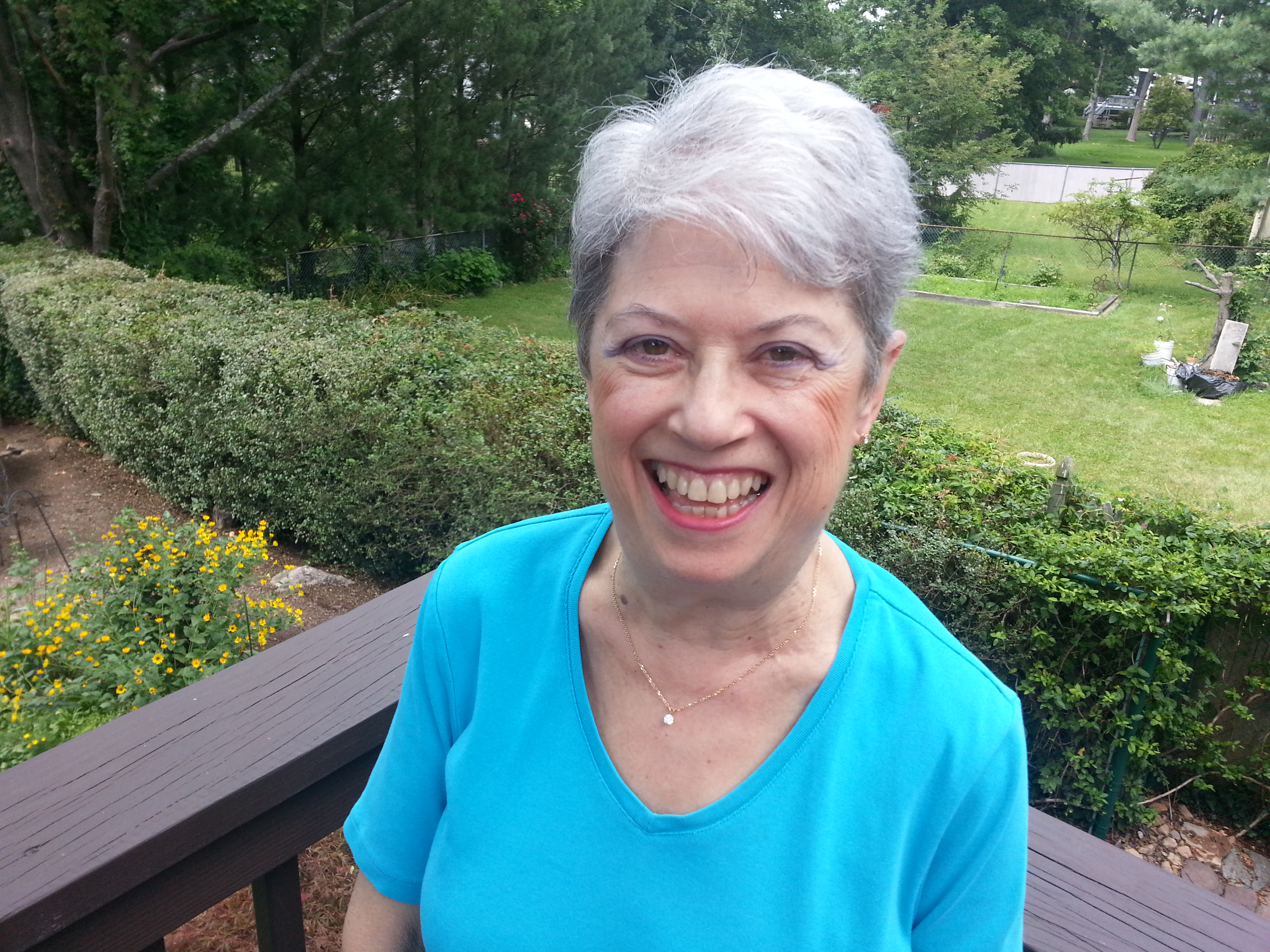 Thank Goodness for Multiple Opinions
Thank Goodness for Multiple Opinions
Marion Farina
My name is Marion Farina. For most of my life I’ve taken good care of myself, eating well and getting a lot of exercise. I considered myself to be a healthy woman, except for having osteoporosis.
In August of 2009 at the age of 62, I went for a follow-up visit to my osteoporosis specialist at St. Barnabus Ambulatory Care in Livingston, NJ. She ordered a routine blood test and the results showed a low albumen (protein) level. I’ve had a low protein level before on an annual blood test ordered by my primary doctor, but since he didn’t make anything of it, I wasn’t concerned. However, the specialist felt it needed to be pursued further. She ordered a 24 hour urine test and the results came back showing a very high level of something called free lambda light chains and creatinine (kidney) function. She told me I needed to see a hematologist right away to pursue the results of the test. I thought she was making a mountain out of a mole-hill, however I did go to see a local hematologist who conducted more blood tests plus a bone marrow biopsy. I asked him what he was looking for and he said multiple myeloma, so I think he only tested for that particular blood cancer. However, since the abnormality was below the range for cancer, his diagnosis was MGUS (Monoclonal Gammopathy of Undetermined Significance.) He said there was no treatment necessary at that time, and it should just be regularly watched. He said I might very well live a long life and possibly never have to undergo any treatment. That’s what I wanted to hear, so I wasn’t going to pursue it any further, except my husband Tony called his cousin, an oncology nurse, and she strongly urged me to get another opinion.
So, although I thought it unnecessary, I went to get a second opinion with an oncologist she recommended who specialized in multiple myeloma. Dr. David Siegel at John Theurer Cancer Center at Hackensack Medical Center in Hackensack, NJ, said that he was not worried about MGUS or multiple myeloma with me, but rather something called amyloidosis. (“What a strange name for a disease” I thought.) He said his clue was the high protein count in my urine which made him suspect something was causing my kidney filter to leak. He was familiar with the disease, as a percentage of his multiple myeloma patients also had amyloidosis. He explained that amyloidosis could lead to the breakdown of any or all of my major organs if untreated. That got my attention!
Dr. Siegel said I needed to have a kidney biopsy performed to confirm his suspicion. I did have the biopsy and it turned out he was correct. It was determined that I did indeed have amyloid deposits on my kidney and my kidney filter was leaking as a result. The leaking manifested as bubbles in my urine, which I had noticed for some time, but to which I had paid little attention. I had thought it was just something that happened as one aged.
There were no other obvious symptoms, except for an unexplained purple blotch on my eye lid. I had pointed the blotch out to my primary doctor in the past, but he didn’t know what caused it but said not to worry about it. I’ve since learned that discoloration and bleeding into the skin around the eyes can also be a sign of amyloidosis. Needless to say shortly after I was properly diagnosed I found myself a new primary care doctor.
Now armed with the correct diagnosis, my supportive husband Tony started researching the disease online and discovered the Amyloidosis Foundation. Through the foundation he found one of the foremost experts on amyloidosis in the northeast, Dr. Ray Comenzo of Tufts Medical Center in Boston. Tony and I immediately went to Boston and Dr. Comenzo confirmed a Primary AL Amyloidosis diagnosis. He said that since my organs had not been seriously compromised and if I opted to have a stem cell transplant (which he said was the first line of defense) I had a very good chance of going into remission. He explained that he had developed the treatment protocol for Amyloidosis at Memorial Sloan Kettering Cancer Center (MSKCC) in New York City, (not far from my home in N.J.) He said I would be in good hands with Dr. Heather Landau at Memorial. I connected with Dr. Landau and scheduled a Stem Cell Transplant for April 9, 2010, (which I now consider my re-birth date.)
A week before my scheduled transplant I had my own (autologous) stem cells collected (as an out-patient). I was admitted a week later to Memorial as an in-patient for what I expected to be around two to three weeks. I was given a high dose of Melphalan chemotherapy to shut down my immune system so that my bone marrow would stop producing the malformed proteins (amyloid). One week later, my new stem cells were re-introduced into my blood stream. For a week I felt normal and thought “this is going to be a piece of cake”, but no such luck. After that first week, I had a prolonged unusual reaction to my own stem cells. It took me considerably longer than most amyloidosis patients – 10 weeks in and out of the hospital to get over the side effects (high fever, full body rash, very low blood pressure, two visits to ICU). In August of 2010 I was told that I was in remission. No sign of amyloid and all of my vitals were back in range. Quite a roller coaster ride, but it was all worth it!
This past April 9, 2016 was six years since my stem cell transplant. My kidneys have healed (no more bubbles), I’m still in remission and all of my vitals continue to be right in range. Thank goodness I got multiple opinions that led to the correct diagnosis! I am so lucky.
Although great strides have been made with research and treatment, amyloidosis is still considered to be incurable. My blood and urine are checked regularly to make sure nothing has changed. I am not on any medication. I feel better than ever and continue to live a normal life.
I wrote a small book detailing the day-to-day experiences of my journey. I hand a copy to every new doctor I see with the hope that it will remind them to routinely test for amyloidosis. To look beyond the symptoms to the cause, as it can mimic many other diseases. I suspect that it’s probably not as rare as the medical world thinks. I know from my own experience, that early detection is the key to the best possible outcome.

Update: July, 2019
I travel to Emory Winship Cancer Institute in Atlanta every six months for testing and I am still in remission. This past April I celebrated my ninth year in remission!
Update: June, 2024
Well, I’ve been in South Carolina now for seven years. It’s now post-pandemic, but I did contract Covid once. I was able to recover, even without qualifying for Paxlovid, since I got tested after having symptoms for five days. The Covid may have made my asthma worse and I have now been diagnosed with COPD. I hope to strengthen the muscles around my lungs so that eventually I will not be dependent on supplemental oxygen. However, this has nothing to do with my Amyloidosis.
Recently I had an upper endoscopy and a biopsy of my stomach showed the presence of amyloid, which made the gastroenterologist jump to the conclusion that my amyloidosis was active. I had also recently seen a Cardiologist who claimed to specialize in Amyloidosis. He did blood tests, and tested for Light Chains with blood analysis, not 24 hr. urine sample (I thought that was odd.) And he indicated that he thought I might have active amyloid. He was already talking about putting me on medication.
I was very upset to think the Amyloidosis was back, but the thought occurred to me that what they saw was old and decided there was only one way to determine whether or not it was active, and that was to have a bone marrow biopsy, which I hadn’t had in at least seven years. So I took charge and had my hematologist Amyloidosis specialist in Augusta, Ga. order a bone marrow biopsy. He thought it was a good idea, I think for the same reason I wanted it, to shut up those alarmist doctors.
It had been a long time since I had a bone marrow biopsy and forgot what it was like. I refused to receive sedation because of the effect it has on the brain and had just a local anesthetic. As it turned out it wasn’t painful. I just felt a lot of pressure. And then I had to wait several days on pins and needles until I got back to see my hematologist to find out the results. He walked in and announced “Nothing, absolutely nothing!” I asked, “you mean no amyloid?” That’s right no amyloid present in the bone marrow. And you tell that doctor to stay away from things he doesn’t know anything about. I told him I already fired the Cardiologist who claimed to be an Amyloidosis expert. What a relief. As it turns out amyloid, even after they're done causing mischief, never leave the body so when the Congo Red Stain test is done it shows amyloid. It doesn’t distinguish between active and leftover from when it used to be active. Good to know. So I’ve been in remission now for fourteen years and counting. The doctors say there is no known cure for Amyloidosis, but I’m thinking I’m as close as it gets!
